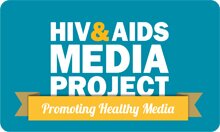Overview
Global spending on HIV/AIDS increased from $300-million in 1996 to $6.1-billion in 2004 (source). However, this is considerably lower than the UNAIDS-estimated $15-billion needed to effectively respond to the HIV/AIDS epidemic in low- and middle-income countries in 2006. This figure is expected to rise to $22-billion in 2008. Most of this funding will need to come from the international community.
In 2004, UNAIDS projected:
"New global estimates ... show that for effective world-wide responses to AIDS, US$12 billion are needed by 2005. By 2007 this amount grows to $20 billion. The US$20 billion in 2007 would provide antiretrovirals to just over 6 million people (over 4 million in sub-Saharan Africa ), support for 22 million orphans, and provide HIV voluntary counseling and testing for 100 million adults, school-based AIDS education for 900 million students and peer counseling services for 60 million youth not in school."In sub-Saharan Africa, 38% of the resources will be needed for HIV care and treatment, 35% for prevention, 22% for orphan support and 5% for other programme costs, including policy, advocacy and administration.
"... Countries with the largest resource needs include large countries with high HIV prevalence levels (South Africa, Nigeria and Ethiopia), those with lower HIV prevalence, but very large populations (China, Russia and India), and those with high coverage rates (Brazil). In order to bridge the AIDS funding gap, budgetary allocation in low- and middle-income countries would have to increase, but a substantial proportion will need to come from international sources (up to 80% in sub-Saharan Africa and parts of Asia ).
"... Domestic spending on AIDS has increased dramatically in many countries, including some of the poorest. UNAIDS estimates that total domestic government spending on AIDS programmes in 2002 by 58 low- and middle-income countries reporting data for three years was about US$995 million — twice the amount documented in 1999.
"South Africa, which has the largest number of HIV-positive people in the world, raised AIDS spending in the national budget for 2003-2004 by 86% over the previous financial year.
"But low-, and even middle-income countries, find it difficult to boost domestic spending to the level needed; this often results in unsustainable responses, especially treatment programs. The long-term impact of stop-start efforts can have devastating effects."






